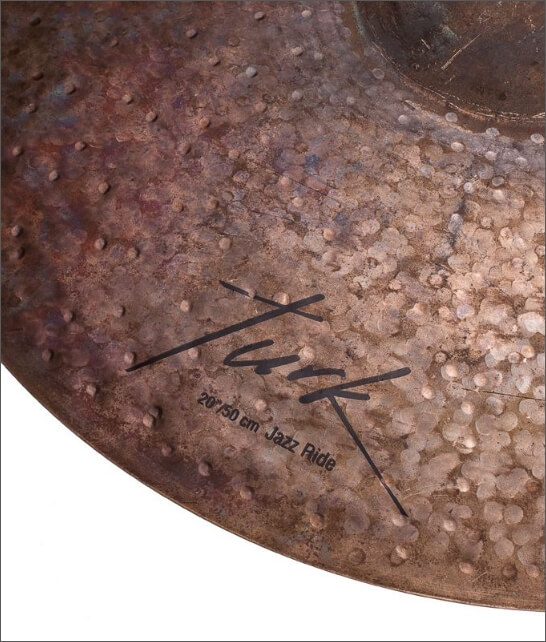Mixing The Elements
This is where the journey of B20 Bronze starts. Basically B20 Bronze alloy is a mixture of 80% Copper and 20% Tin and B20 is known as the most musical of all alloys. The highest quality raw materials are used to produce our B20 alloy.
Our centuries old secret process gives the alloy its strength, durability and flexibility. Without the secret process, the metal will be hard but very brittle and can break like a glass easily. That secret process has an extremely important role on producing musical sounding cymbals.
In the very first step of producing cast cymbals, the proper mixture of metals are melted and combined in the melting pot which they soon become castings. Melting allows the copper and tin mix in a certain heat and that heat evaporates all impurities in the alloy. Now the molten alloy is ready to be poured into molds to become castings.

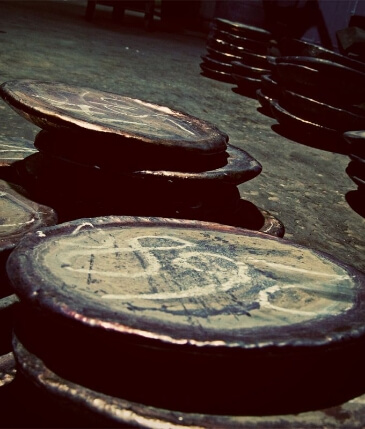
Casting
The molten alloy in the melting pot is directly poured in to the molds. The amount of the molten alloy in every mold can be different depending on the cymbal type. After pouring, the alloy gets hardened and becomes what we call Castings. Castings are removed from the molds with extreme care and grouped according to their weights. Now these castings are ready for the next step which we call “Heating”..
Heating and rolling
The castings are now ready to be heated around 700-800 C in our oven. Each casting is heated evenly in the oven by our skilled craftsmen. The heated castings are now soft and ready to go under the rolling machine to become metal discs which we call “blanks”. These blanks are heated up and rolled again several times until the blank reaches its desired thickness. This process also allows the metal molecules bond together perfectly and makes the metal more durable. Then blanks are set aside to cool before the next process.
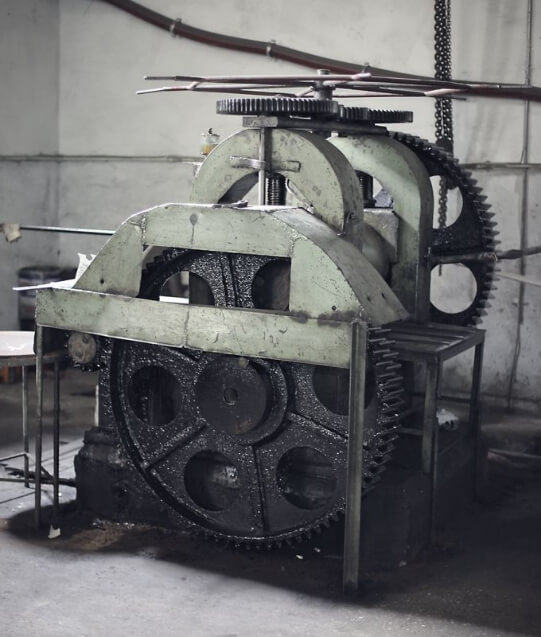
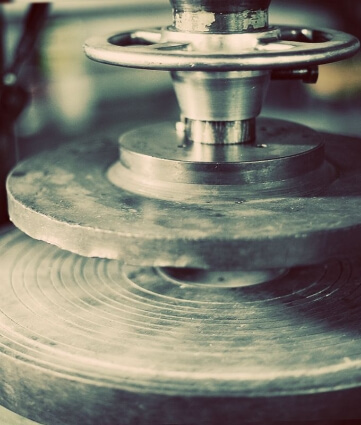
Pressing The Bell
Cooled down blanks are now ready for bell pressing but at this phase, the blanks are still very brittle and over-sized. After marking the center of the blanks for the bell, they are send to oven one more time in order to make the metal soft and pliable again for pressing. The bell is pressed into the hot blank and a little guide hole is punched into the center of the bell. Finally, blanks are tempered and getting ready for annealing process which is one of the most important parts of cymbal making. Red hot blanks are placed into cool water and this hot-cold process takes the strength of metal to a new level. Now the B20 is more durable, flexible and musical then ever. After cutting the blanks into their proper shape, all the excess metal is send to be recycled. Now the properly shaped blanks are ready for the next step.
Hammering
This process is the first and the most important phase of shaping the sound of a cymbal. Hammering is done by our skilled craftsmen, using centuries old hammering techniques. These techniques determine the dark, complex and musical sound qualities of Traditional Turkish Cymbals. In its nature, hammering process requires mastery, skill and lots of hard work cause in handmade cymbals, the profile of a cymbal is given only by hammer hits. For example an 16” Crash has got approximately 1500 hammer hits. The profile of each blank is different from each other which means the amount of hammer hits required, can differ from cymbal to cymbal. This results in different sounding cymbals even in the same series, same sizes. That makes every cymbal sound unique and makes every player who uses our cymbals sound unique.
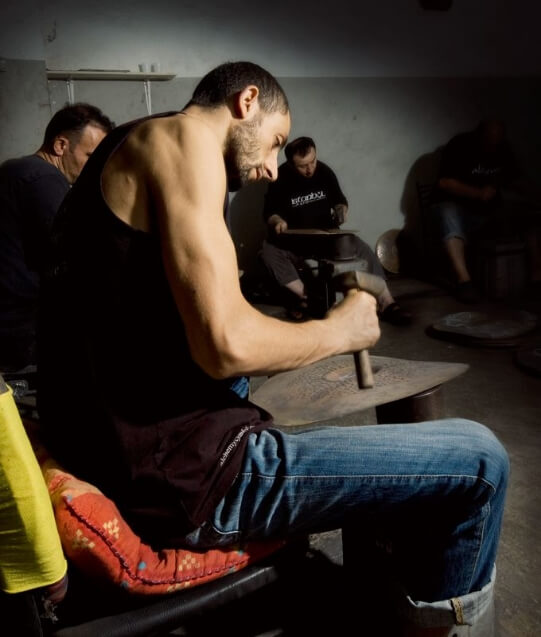
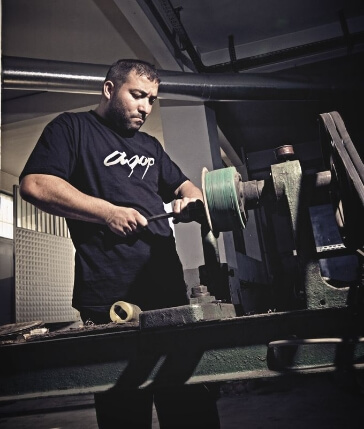
Lathing
Lathing is the other very important phase of cymbal making which directly effects the sound of a cymbal. It should definitely be done by highly skilled craftsmen. Lathing cuts circular grooves on a cymbal and lets the vibrations travel on the surface of a cymbal easily. Also lathing helps to cut down the cymbal to its proper thickness. Depending on the series, some cymbals are lathed both on top and bottom, some only on top or on the bottom and some without any lathing. The cymbals which are unlathed, remain darker, dryer and dirtier in sound. Comparing to the unlathed cymbals, lathed cymbals are more open sounding, respond quicker and has got more sustain. Several types of blades, shaving techniques and pressure levels can be used in order to obtain different sounds out of B20 Alloy. After the lathing, the rough edges and the center holes are smoothed out by a craftsman and cymbals are ready for the final process.
Testing And Ink Labeling
After lathing, finished cymbals are sent to final testing. Our product specialist takes care of each cymbal and does the final visual and audio tests. Depending on the series, some cymbals are sent to the high speed buffing machine first, for their shiny, mirror-like look. Quality approved and finished cymbals are sent to the stamping machine. Ink stamping machine applies our company and product logos on the cymbals using a silicone pad. After the final check of the logos, the cymbals are ready to take their places on the shelves in our showroom in order to be played by all levels of musicians worldwide.
In case you have questions please visit out FAQ section or don't hesitate to contact us directly.
